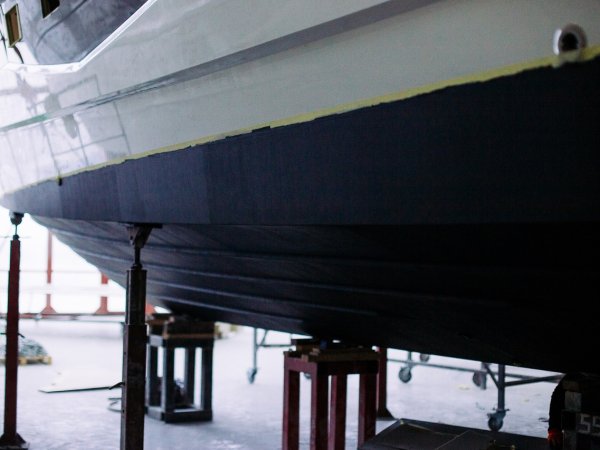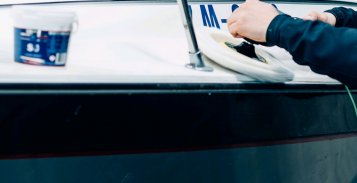
HARD ANTIFOULING is recommended to protect areas below the water line. Suitable for all kind of motorboats up to 70 knots speed. It can be also used on sailboats.
Recommended for salt, fresh and mixed water. Due to increased hardness is resistance to damage.
HARD ANTIFOULING Sea-Line can be applied on hulls made of laminate, steel, wooden. Don’t use on aluminium.
Paint in colour : red, blue and black in 0,75 l or 2,5 l can.
NEW COLOUR ALUPLUS SELF-POLISHING. For people, who search paint with high efficiency and for area on big fouling, we recommended self polishing antifouling ALUPLUS. In season 2018 we add to offer colors blue and black. Available packing in can 0,75l and 2,5 l. The output and efficiency of the paint is 30% higher than with traditional products. It can be applied on hulls made of aluminium.
THINNER FOR ANTIFOULING Thinner for antifouling it’s last product in completing the offer antifouling paint. Thinner it’s product for all antifouling paint Sea-Line. We don’t recommended thinning paint more 5%.

Disculpa, pero esta entrada está disponible sólo en Polaco.

Come and join us at METSTRADE 2023, METSTRADE the best event for marine industry professionals, happening from November 15th to […]

Visit us and our production plant without traveling

New in the 2023 season is a new polishing wool The new black and white polishing pads in premium quality […]
No, polyurethane is a 2-component paint (base + hardener) and after applying 2-component paint to 1-component paint, the proper adhesion of the paint to the surface will not be maintained, the paint will begin to wrinkle and surface defects will appear.
If the scratches are not deep, then we can renew the scratched side by polishing with Sea-Line polishing pastes. Above the waterline, when the scratches are not deep, the surface can be repaired with a DRY FAST gel coat filler. Deep scratches should be filled with epoxy filler (selected depending on the requirements of the scratched surface), painted with a primer and then painted with topcoat.

Para rellenar cavidades y hacer frente a las desigualdades causadas por daños o durante el curso de la producción

Barcos de superficie de impacto de las actividades de ósmosis y la corrosión destructiva en ambientes hostiles

Protección contra el agua y contra los efectos negativos de los rayos UV

Proteger la parte inferior de la embarcación antes de las incrustaciones de algas y conchas. Protección contra el agua

Eliminación efectiva de arañazos, color refrescante y gelcoat brillo o pintura

Preparaciones especializados para la limpieza y restauración efectiva

Laminación, encolado y relleno de fisuras en gelcoat

Una serie de productos útiles durante el constructor de barcos de trabajo